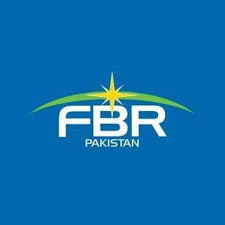Navigating Customs in Pakistan :A Guide to the Green and Red Channels
Understanding the Green Channel Traveling can be exciting, but navigating customs? Not so much. However, understanding how it works can make your journey smoother. Let’s talk about the “Green Channel” first.
What is the Green Channel?
The Green Channel at customs is essentially the ‘fast lane’ for travelers who don’t have any restricted items or anything that exceeds the duty-free limit. It’s like saying, “I have nothing to declare.”
How Does it Work?
– Choosing the Green Channel: By opting for this channel, you’re indicating that you’re carrying items within the permissible limits and nothing prohibited.
– Customs Checks: Even in the Green Channel, be prepared for random checks. Customs officers might scan or physically examine your luggage. This is a routine procedure worldwide to prevent misuse of this channel.
– Random Selection: If you’re selected for a check, it might be random or based on certain criteria. Cooperation with the officials is key.
Caution!
– Misuse Consequences: If you wrongly use the Green Channel and are carrying prohibited or dutiable items, you could face fines, legal action, or confiscation of your items.
Understanding the Red Channel
Now, let’s demystify the Red Channel.
What is the Red Channel?
The Red Channel is for those with restricted or dutiable items. This means you have something to declare and may need to complete some customs formalities.
Key Points to Remember
– Commercial Quantities: If you bring goods in commercial quantities, expect to pay a fine (30% of the value) plus the usual duties and taxes.
– Prohibited and Restricted Items: Some items can’t be brought into or taken out of Pakistan at all, while others have specific conditions like licenses or permissions.
– Re-importing Goods: If you’ve previously taken items out of Pakistan, you can bring them back duty-free, provided you have an export certificate or a passport endorsement.
– Currency Declaration: Pakistan Customs offers an online currency declaration for international travelers. It’s a straightforward way to fulfill your legal obligations.For the form you can visit the following link
– Duty-Free Allowance: Familiarize yourself with the baggage rules brochure for information on what Pakistani nationals can bring in duty-free.For more information you can visit baggage rules brochure.
– Transfer of Residence: This applies to Pakistanis returning after two years or more abroad, or foreigners moving to Pakistan for at least two years.
Tips for a Smooth Customs Experience
– Choose the Right Channel: Always select the channel that corresponds to what you’re carrying.
– Be Prepared for Checks: Have your documents ready, and be patient during any checks.
– Know the Rules: Understanding what you can and cannot bring helps avoid surprises at customs.
– Use Online Facilities: Leverage online tools like the Currency Declaration System for added convenience.
SBP Injects Rs 5.6 Trillion into Market with Dual OMOs to Bolster Liquidity
The State Bank of Pakistan (SBP) has executed a significant financial maneuver, conducting two distinct types of Open Market Operations (OMOs) on Friday, leading to an injection of a hefty Rs 5.6 trillion into the market. This move is aimed at enhancing liquidity support in the financial system.
Out of the total amount, a substantial Rs 5.3 trillion was channeled through a reverse repo OMO, set for a duration of seven days. This operation bears an interest rate of 7.25 percent. The reverse repo OMO serves as a critical tool for the central bank, allowing it to absorb surplus funds from the banking sector, thereby aiding in controlling inflationary pressures.
Furthermore, an additional Rs 200 billion was infused into the market via a Shariah-compliant Modarabah-based OMO. This operation, spanning three days, comes with a profit rate of 7.28 percent. The Modarabah OMO stands as a significant alternative for Islamic banking entities, offering them a Shariah-aligned option alongside conventional OMOs.
The SBP’s strategy of regularly conducting OMOs is a key aspect of its monetary policy, primarily aimed at regulating the money supply and stabilizing interest rates within the economy. These operations are also influenced by factors such as the government’s borrowing needs and the status of foreign exchange reserves.




